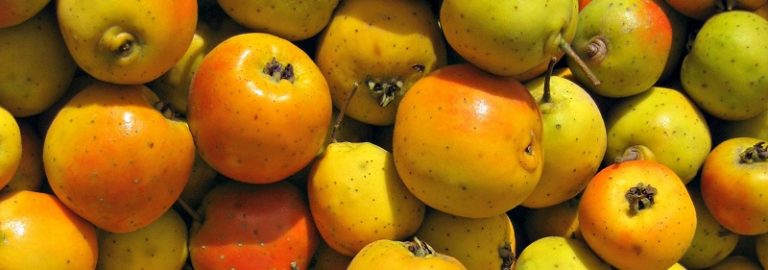What is Mexican hawthorn?
The Mexican hawthorn, also known in some places as manzanita or manzana de la india, is a little-known fruit from Mexico, with a bittersweet taste and outstanding for its peculiar aroma. It has a shape similar to apples and some variety of guava. To find out more, check their features.
Characteristics of the Mexican hawthorn
As for shape, it is very similar to the fruit of the apple, which is why it is also known as the small apple, but small in size, since it can measure from one centimeter and a half to three centimeters.
It tends to be yellow or orange, becoming a little reddish, although that color is not even because they usually appear spots, pints or black freckles. Its rind is smooth and rough, contains pulp inside with a bittersweet taste and is very thick, consumed naturally as fruit and also as jam.
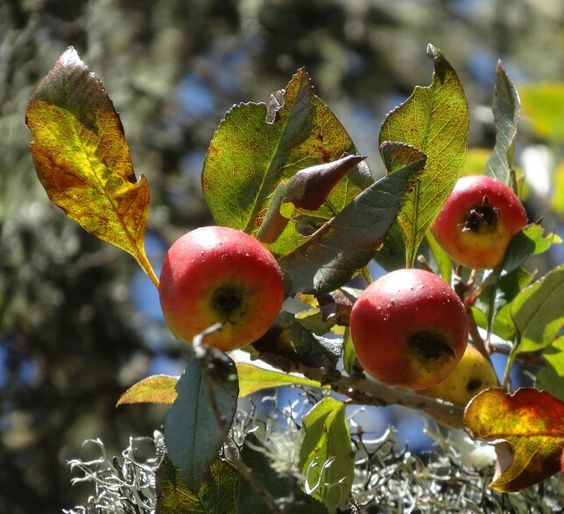
Origin and meaning of the word Mexican hawthorn
Why is this knitted fruit named after it? The word Mexican hawthorn comes from an ancient word texócotl has Nahuatl origin, uto-aztecan language, known since the 7th century, this language is known in Central America. The meaning is in the composition of the word because Tetl in Nahuatl means stone and xocotls means fruit with a bittersweet taste. In this way, this fruit was called Mexican hawthorn because it has been a fruit with a bittersweet taste and hard as stone.
Scientific name of the Mexican hawthorn
It is given the same scientific name of the tree that gives the fruit of the Mexican hawthorn or manzanilla of the Indian, Mexican Crataegus.
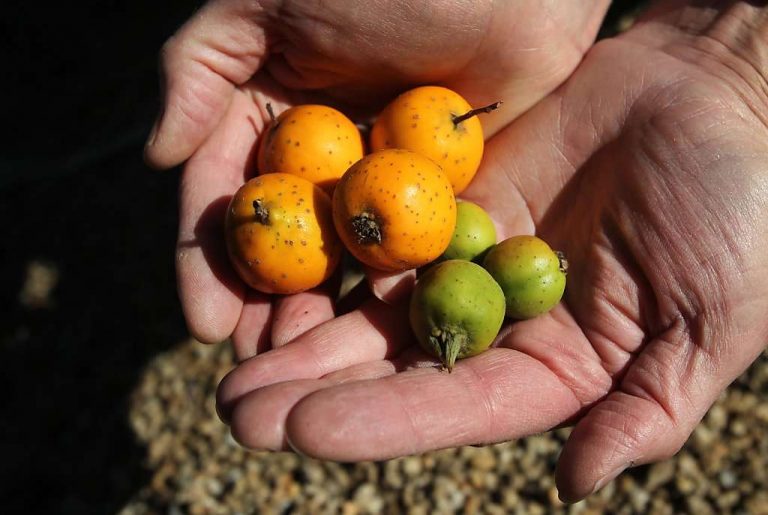
Where does the Mexican hawthorn or crataegus originate from?
It is original as its scientific name itself indicates it of Mexico and certain localities of Guatemala. It can be seen but less likely in the American Andes.
We leave you a very interesting video about the origin and many of the characteristics of this Mexican hawthorn fruit.

Properties and benefits of weave as a medicinal plant
As fruit has several properties as they are: (each property is accompanied by the medicinal benefit that brings with it and so it is good to consume this fruit)
Rich in vitamin C content, this vitamin as it is known promotes the health of people by increasing and strengthening the defenses and thus prevents disease.
Contains calcium: For this reason, the fruit of Mexican hawthorn benefits the growth and strengthening of the bones.
Presence of complete B vitamins, components that help the body form red blood cells and help prevent disease.
Contains iron: which benefits human haemoglobin.
High pectin content so it is widely used in the food manufacturing, pharmaceutical and cosmetic industry.
What is the purpose of Mexican hawthorn or crataegus?
For all these medicinal and curative properties and the various benefits, the Mexican hawthorn as a medicinal plant are also used at home in remedies to alleviate certain infectious conditions, especially for lung diseases.
It is also widely used for its aromatic qualities because it has a very characteristic smell. Where it is most commonly used is in the Christmas season.
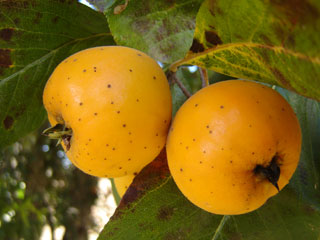
What is the season of the fruit of Mexican hawthorns?
From August onwards, it begins to make its appearance, although it is mainly seen in the winter season, so there is no shortage of different recipes for Christmas celebrations (the most common at this time is the Christmas punch). It is also peculiar to see it in the town of Puebla on the festival of the Day of the Dead or Catrinas in the tributes and acts that take place on that day.
Ponche with Mexican hawthorn
In the aguinaldos in Mexico it is also common to see the manzanita accompanied by mandarins and in some cases peanuts, so it is used for decorations.
Characteristics of the Mexican hawthorn tree
The tree of the Mexican hawthorn (scientific name: Mexican Crataegus) can reach a height of 4 to 10 meters, so it provides good shade, among its characteristics is also the amount of thorns it has. For sowing, it is said to be a plant that grows well in almost all climates, soils and does not need specific care.
The hard, impenetrable wood or weaving stick is used for the manufacture of tools and working instruments.
Characteristics of weave leaves
The weave leaf is irregularly shaped and serves as animal food, it is also attributed benefits for people, such as its diuretic properties, so it is used in infusions, along with other plants for digestive treatments.
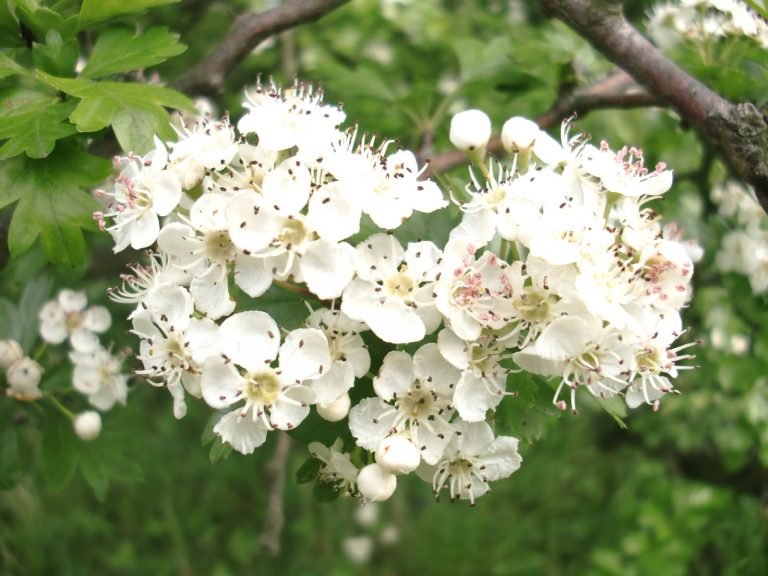
Mexican hawthorn flower
As can be seen in the image, it is a white flower separated in petals.
The flowers of this tree scientifically called Mexican Crataegus have similar benefits to the leaves, as they are used in diuretic remedies to help fluid retention and blood pressure.
Mexican hawthorn seeds
The seeds, as it is also called heart of Mexican hawthorn have a smooth shape and color carmelite or brown, are contained by a fibrous bone, has about four to six seeds, and are used for dietary treatments and detoxification of the body. It is the basis of the well known and sought-after Alipotec drug.
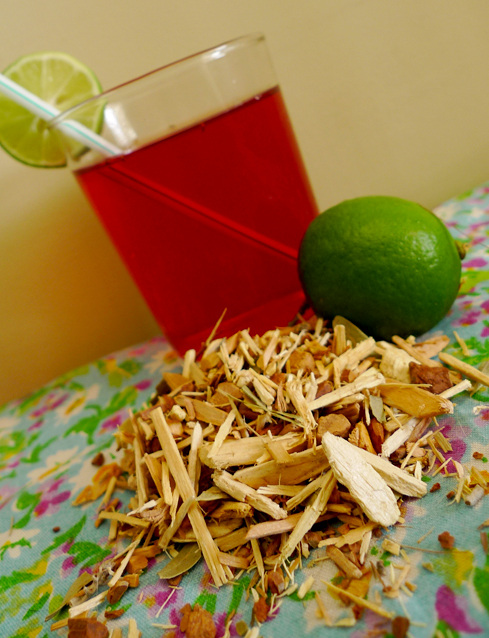
Mexican hawthorn root medicinal plant
The root of the Mexican hawthorn also has several benefits among them diuretic like its leaves and flowers, it is consumed in the form of an infusion, helps to eliminate intestinal parasites and diarrhoea.
Root of the tejocotes
We hope that all this content related to this wonderful fruit of Mexico has served you well. Don’t forget to share this article with your friends?
Mexican hawthorn in spanish (Tejocotes en español)
In Spanish, this fruit is known as Tejocotes, an original name that is recognized from the botanical, linguistic and everyday language points of view.

